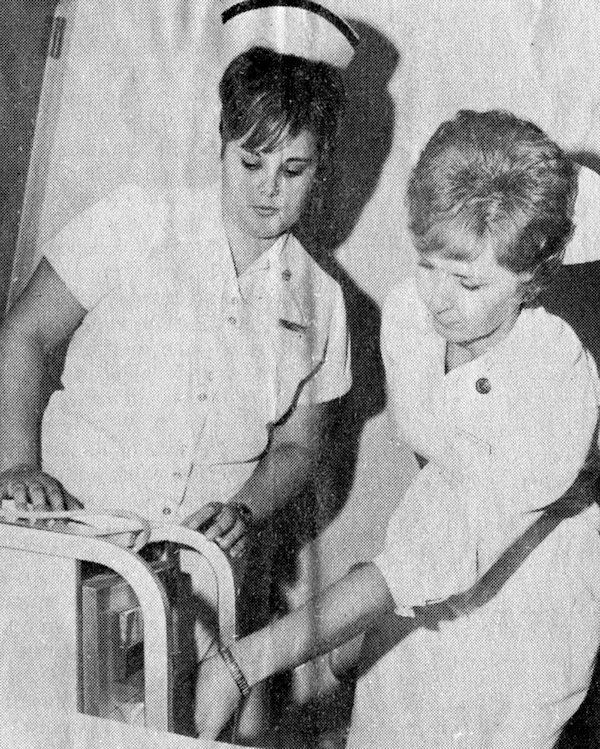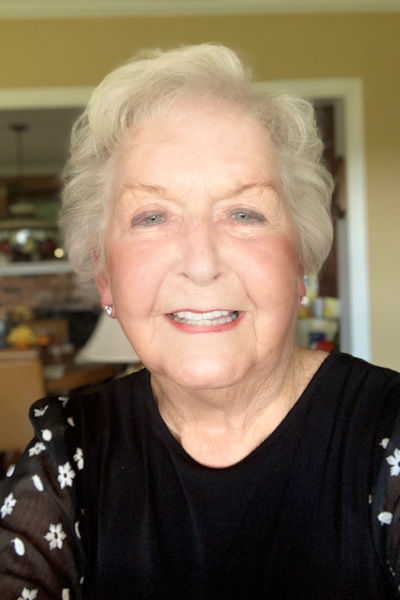
“There’s got to be a better way.”
It was just a heart attack. But back then, in the 1960s, before chest compressions, CPR and defibrillators were widely known or accepted, heart attacks were almost always fatal.
Martha Adams, then assistant director of nursing at Tanner Health, remembers pitching in to make rounds with internal medicine physician E.V. Patrick, MD. A man who’d suffered a heart attack and was being treated with IV Novocain died suddenly right in front of them — and there was nothing else they could do.
“We both cried,” said Adams, who grew up just across the state line from Carroll County and remembers Tanner Memorial Hospital’s grand opening when she was just a teenager. “I said, ‘If you will help us, we will get something better.’”
With its monitoring equipment, Tanner’s two-room cardiac ICU was innovative, for the time. But with the assistance of physicians and administrators, Adams did what she promised: She helped develop and assemble Tanner’s first “Cardiac Crash Cart” for cardiac and respiratory resuscitation — and helped train staff nurses on it, too. Pictured here, Frances Girdler, RN, left, and Martha Adams, RN, assistant director of nursing, inspect a defibrillator that can restore a heartbeat to normal rhythm.
“When you start out with a goal in mind, you’re able to find things that need to be done,” said Adams. “I’ve just always been that way. I’ve always thought there has to be a better way.”
Tanner was only Adams’ second job after graduating from nursing school at what was then known as Emory Crawford Long Hospital. But she hit the ground running. Besides developing the cardiac crash cart, she wrote Tanner’s first nursing procedure manual. She also helped draw up Tanner’s program to train licensed practical nurses (LPNs) through a new vocational school, meeting the fast-growing hospital’s need for trained nursing staff.
She then left nursing for a while, devoting the next 10 years to raising her family. That is, until Gloria Emory, Tanner’s director of nursing at the time, called her personally on the recommendation of beloved longtime surgeon Mac Martin, MD, to ask her to return to Tanner and make something else better.
It was 1985, and after training at the Centers for Disease Control and Prevention, Adams would take the lead on developing Tanner’s first polices on infection control and prevention during the height of the AIDS epidemic. These are policies staff still use today, and they were the framework for Tanner’s policies during the COVID-19 pandemic. She was also active in the Georgia Infection Control Network, influencing policies and procedures for emergency personnel statewide.
Before retiring in 2003, Adams went on to finish her career at Tanner as director of quality management for Tanner Health Services, guiding process improvement for all of Tanner’s facilities. The policies she wrote not only helped the health system meet the stringent guidelines for Joint Commission accreditation but — more importantly — ensured continuity of care for patients.
 Then came her full-circle moment. A few years ago, Adams began to have heart issues and was diagnosed with atrial fibrillation (or AFib). Last fall, she was admitted to Tanner Medical Center/Carrollton with a bad bout of AFib, likely exacerbated by a respiratory infection she had at the time. She underwent a cardioversion in Tanner’s cardiac catheterization lab, a treatment that sends controlled electrical shocks to the heart to restore normal rhythm. It’s the type of cutting-edge procedure that she, as a young assistant director of nursing, probably never imagined would be possible.
Then came her full-circle moment. A few years ago, Adams began to have heart issues and was diagnosed with atrial fibrillation (or AFib). Last fall, she was admitted to Tanner Medical Center/Carrollton with a bad bout of AFib, likely exacerbated by a respiratory infection she had at the time. She underwent a cardioversion in Tanner’s cardiac catheterization lab, a treatment that sends controlled electrical shocks to the heart to restore normal rhythm. It’s the type of cutting-edge procedure that she, as a young assistant director of nursing, probably never imagined would be possible.
Over the course of her career, Adams said she’s seen Tanner tear down its original Carrollton hospital, build new facilities and grow its specialized services. Now, as Tanner continues to celebrate its 75th anniversary, she’s seeing even more clearly just how far Tanner has come, not just as an employee but also a patient.
“We’ve always worked on access to care. It was always difficult, but the cardiac program has the most outstanding access to care that I have ever seen,” she said. “Today, if I needed the doctor, I could call, and they have a triage nurse who talks to me. And if I need it, she gets me help. Then, through Tanner MyChart, you can even text your physician or your PA, and they typically call me back the same day. I can’t say enough about it.
“All I can say is, as a recipient of the care that we worked so hard to provide, I think it’s come full circle, and I’m grateful for that,” said Adams. “And I’m grateful to have been a small part of that.”